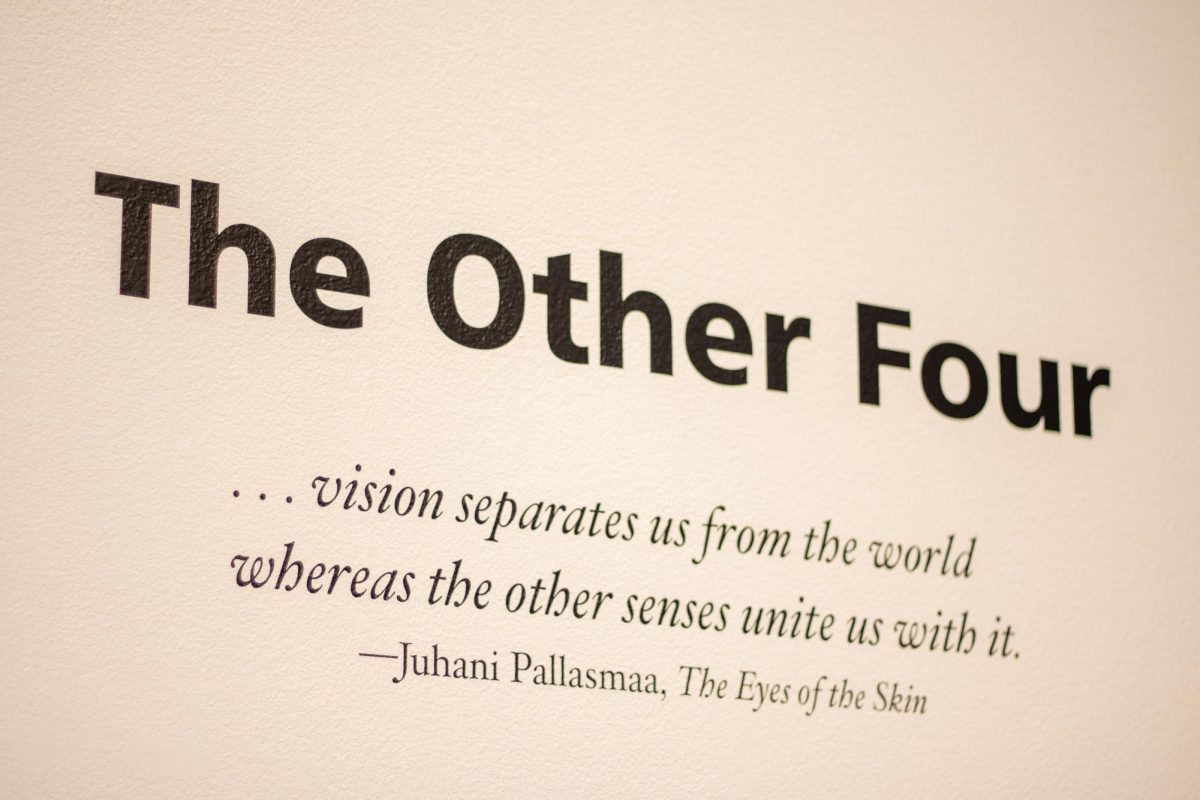It was moving day some 10 years ago in a debilitated college house on the West Bank.
Along with the hand-me-down tables and stained loveseats, roommates and University students Scott Wentworth and Rog Meyer discarded a collection of conquistador relics they had amassed over the years.
At least they would have, if their friend Eric Dregni hadn’t realized the collection’s inherent cultural value and rescued it from the trash.
The stuff “was priceless,” said Dregni, the collection’s curator emeritus and a graduate student in creative writing.
For the past few months the items have inhabited a back corner of the Kitty Kat Club. The collection has been christened the El Dorado: Conquistador Museum.
As might be expected for a museum exhibit, the items in the collection have a long and storied history.
Many items are from as far back as the late 1960s, Dregni said. Mostly, though, the foam conquistador bas relief pieces, gilded-ship lamps and velvet paintings of matadors (best viewed under black lights) demonstrate “an early ’70s trend,” he said.
“It was a big style for dens and rec rooms. It’s one example of home décor from a certain era,” he said, speculating that the success of “Man of La Mancha” spurred its spread.
While under its original owners Wentworth and Meyers, the collection sat in a basement frequented by college students drinking alcohol. At the time the artifacts were spaced out in an armaments room and an outdoor sculpture garden, Dregni said.
Despite their readiness to rid themselves of the pieces of art, Wentworth and Meyers actively pursued new acquisitions by frequenting local Goodwills, setting a meager $5 limit.
By the time Dregni acquired it, the El Dorado collection totaled more than 100 works. Dregni first installed the exhibit in the basement of the William Mitchell College of Law used bookstore, where he was employed. It was there for six or seven years, he said, but went on location to the 400 Bar in the early ’90s, he said, and temporarily visited the Dinkytown Espresso Royale in 1996.
At that show, “people were just like, What on earth?” he said. “It was pretty funny to see their reactions.”
An owner of a nearby business offered Meyer $150 for “Pizarro on Ass” at that show, but he was unwilling to sell. The piece is now at the Kitty Kat Club, but other admirers of the collection haven’t been interested in purchasing so much as stealing them.
“For sure, about 10 pieces have been stolen over time,” Dregni said.
The plundered pieces include a large matador rug that Dregni paid $15 for and calls “one of his favorite” works in the collection.
Before the April 23 opening at the Kitty Kat Club, a foam piece depicting an indigenous person was stolen as well.
Dregni used to be angered by the heists, but doesn’t feel that way anymore, he said.
“I figured it was started by students, and a student probably took it; they need it more than I do,” he said.
Kitty Kat Club manager Tom Rimarcik said the El Dorado collection is at home in the eclectic décor of the restaurant/bar.
“There’s a lot of kitsch in the place. I think it fits right in,” he said. “People love it.”
It’s possible some people love it a little too much, though, especially the 6-foot, 3-D conquistador knight figure that guards the collection.
“There was a girl on her 21st birthday a few weeks ago,” Rimarcik said. “She was a bit drunk and she was humping it.”
He had to grab the piece before the girl fell down with it, he said.
Will Dregni be angry if further thefts occur?
Although he loves the new location and the El Dorado collection, Dregni said he is happy to give up ownership of the items, as many of the foam pieces are toxic and can’t legally be disposed of in Dumpsters anyway.
“The stuff doesn’t belong in a museum – it belongs in student housing. It’s a big, organic process.”
















